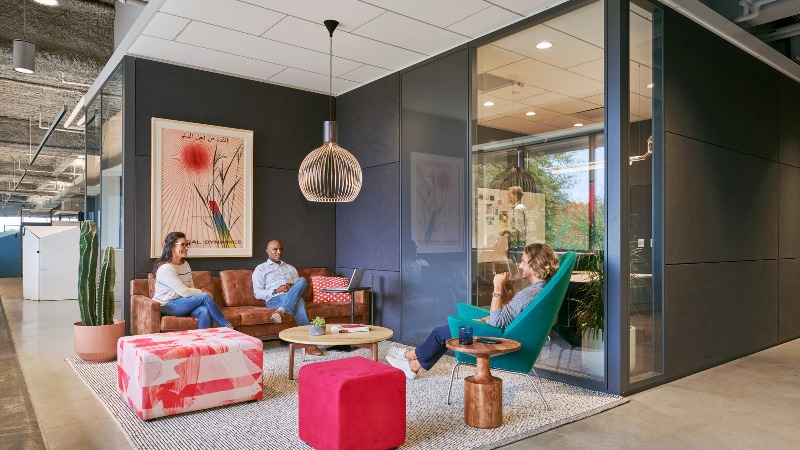Environmental, social and corporate governance (ESG) issues are becoming increasingly central to a company’s reputation and financial performance. And the workplace presents a unique opportunity for companies to showcase these areas and help deliver them.
So how can you embed ESG best practices within the workplace? And why does it matter, now more than ever?
Embedding ESG best practices in the workplace
What is ESG?
ESG is an evaluation of an organisation’s collective commitment to social and environmental factors.
ESG began as three essential criteria that investors used to choose companies to do business with. These are defined as:
- Environmental - How does an organisation use energy and other resources and in what ways does it create waste?
- Social - How does an organisation affect people, from its employees to the wider community?
- Governance - How does an organisation make decisions and are they honest, ethical and fair?
Today, these three concepts describe much of how we expect companies to operate. And coming out of the pandemic, with mounting pressure to ‘be better’, the spotlight is on businesses to improve their ESG practices.
So what does this mean for your workplace?
When designing and furnishing the workplace, taking an ESG approach means asking questions like:
- How can we reduce our carbon emissions?
- How can we improve air quality?
- How can we make the environment inclusive to all workers?
- How can we help people to feel safe?
- How can we help people to thrive?
- How can we ensure a positive impact in the broader community?
- How can we make fair and ethical decisions around suppliers?

‘E’ for Environmental - lowering carbon emissions
Companies are becoming increasingly interested in how they can reduce their carbon emissions. And that starts with the buildings they occupy.
Poorly designed buildings use more natural resources, increasing the demand and contributing to global warming. ‘Green’ buildings on the other hand, not only reduce or eliminate negative impacts on the environment, but they can also have a positive impact on the environment by generating their own energy or increasing biodiversity.
You may not be able to change your office building, but when fitting out your workplace, there are many ways to reduce your carbon emissions, including:
- Reducing the quantity of materials and products used
- Opting for natural materials like timber, bamboo and wool
- Using products with high recycled and recyclable content
- Looking for products with an environmental product declaration (EPD)
- Minimising the amount of waste produced
‘S’ for Social - supporting both employees and the wider community
The office can play a key part in demonstrating your company’s commitment to people and institutions in the communities where you do business.
But this starts at home - with how you serve the wellbeing of your own employees. Some examples of how the workplace can support employee wellbeing include:
- Ensuring a range of settings to suit different needs throughout the day, from collaborative hubs to quiet spaces to social break out areas
- Giving workers choice over where they work and the ability to control the environment
- Providing furniture that supports physical wellbeing, e.g. sit-stand desks that encourage movement
Then there's your relationships with the wider community. Charitable initiatives, for example, may be a part of your ESG strategy.
Gensler predict that the office of the future will become a central part of its community. Even when workers are not present, the office will contribute to the surrounding neighbourhoods, by integrating its ground floors into the community, and existing alongside health centres, libraries and other public services for all to access.
‘G’ for Governance - working with ethical suppliers
The ‘G’ in ESG is all about the internal practices and processes your company has in order to govern itself and make effective decisions. For example, when fitting out your workspace, you may choose to work only with suppliers that are ethical and diverse. You may look to ensure they have adequate policies around:
- Fair employment
- Diversity and inclusion
- Safe working conditions
- Anti-bribery and corruption
- Sustainability
- Regular auditing of suppliers policies
Why ESG in the workplace matters
A company’s investment in ESG is more than just a feel-good exercise. A magnitude of research shows that companies that pay attention to ESG concerns experience faster growth than companies that don’t.
Why?
Because not only do they attract more customers, but they attract more employees too.
A report by PWC revealed:
- 84% of employees are more likely to work for a company that stands up for environmental issues.
- 83% of employees are more likely to work for a company that stands up for social issues.
- 86% of employees are more likely to work for a company that stands up for governance issues.
And research by Marsh & McLennan found that:
Top employers, as measured by employee satisfaction and attractiveness to talent, have significantly higher ESG scores than their peers.
Ultimately, people who feel a sense of purpose in their work are more satisfied, work harder, stay longer, and produce better results. They are more motivated to show up to work in the morning because the work they do and the environment they work in aligns with their values.
Though a priority for companies before the pandemic, Covid-19 has accelerated the ESG agenda. Companies are already being defined not just by how they treat their employees, but by their impact on the world. With tight net carbon goals set for 2030, an increasingly engaged talent pool, and a fierce war for talent, this pressure for companies to 'do good' will only continue to mount.
_ccexpress.jpeg?width=800&name=19-0117606%20(1)_ccexpress.jpeg)
Summary
The workplace is a physical representation of a company’s brand and culture. And the design and fit out of the workplace is an essential way of demonstrating ESG credentials while also helping to deliver them.
Embedding ESG best practice within the workplace enables companies to improve employee engagement, boost financial performance, and help save the world - all at the same time. Organisations that fail to adapt will be left behind.











